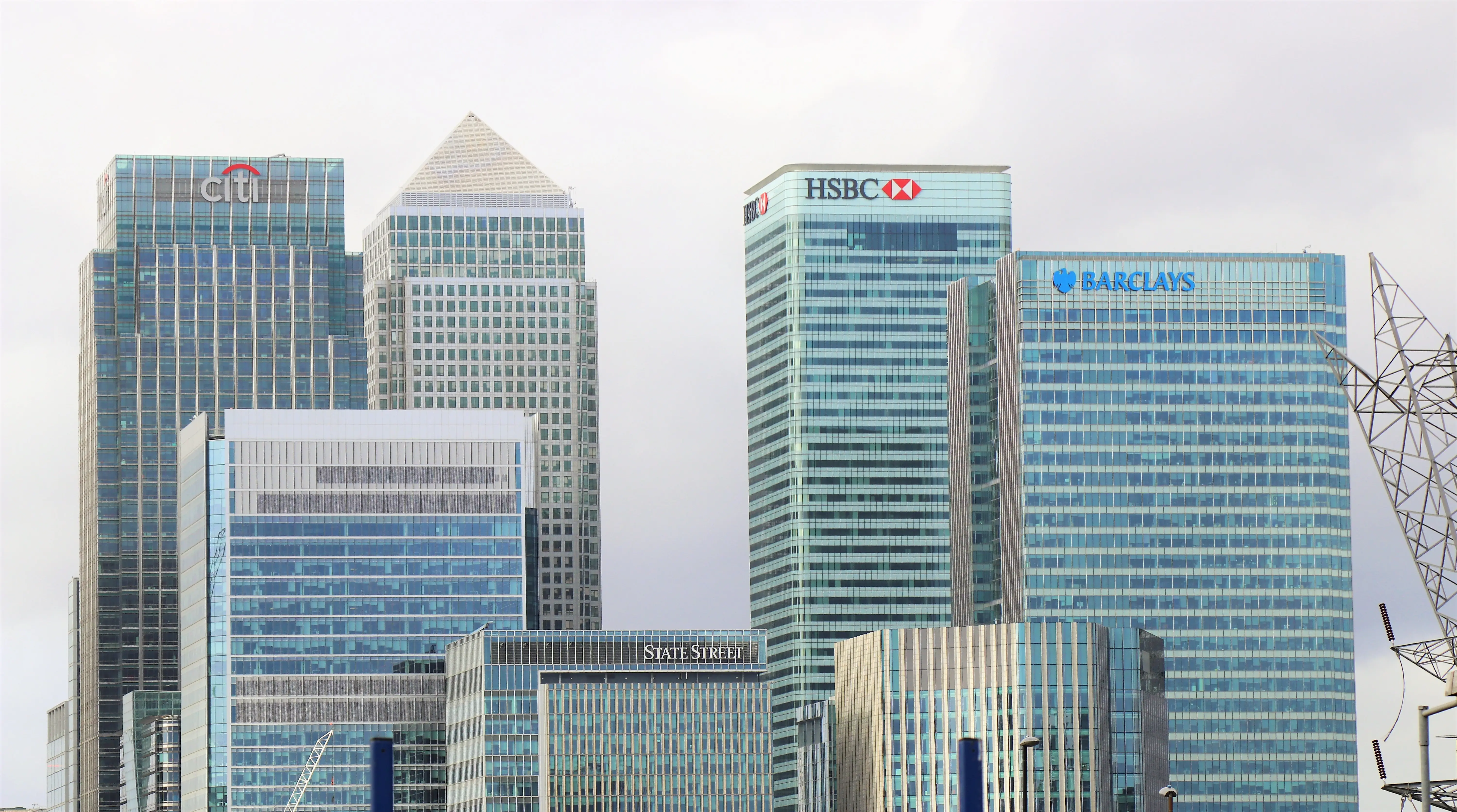Barclay Bank is one of the traditional banking and financial service institutions in the United Kingdom. This organization has over three hundred years of expertise in the banking industry. The company’s business operates in fifty-fived nations via direct or indirect activities. The bank reported a yearly revenue exceeding twenty-one billion pounds for the year ending 2017. The current objective of the financial institution is to achieve a rise in business through the utilization of consumer service and technology. The company’s main products are investment banking service, corporate banking, personal banking services and wealth management (WORKS, H).
Barclay’s Bank SWOT analysis outlines its strengths and weaknesses for appropriate development opportunities. The first strength of its strong brand image is arising from long term banking experience and global presence. The bank also has a wide variety of products portfolio. The third strength is that Barclays is the first bank to advance in the use of technology. The company also has strong assets well distributed across the world. The fourth strength is excellent business management that enables the company to overcome external challenges. The last strength is the unique environmental activities that assist in customer acquisition (WORKS, H).
The first weakness is worldwide competition in the banking and financial service due to slow growth. The bank has also faced legal charges in the United States and Qatar, creating a negative institution image. A third weakness is the high cost of global activities impacting profit margins. Lastly, the company may face challenges in policy and procedure development due to Brexit and the falling pound rate. Barclays Bank faces several factors, including social, political, economic, environmental, legal and technological, that constantly affects its operations. This paper investigates environmental aspects, including carbon emission on Barclays Bank’s operations (WORKS, H).
-
Climate Change Disclosure Policies
Climate change poses a serious stability risk (Campiglio et al., 2018). The risks include liability and physical risks. Transition risks may also be driven by technology, consumer habits and policy changes leading to a poor transition (Ryan-Collins, 2019). Physical risks arise from the interaction of vulnerable human and nature exposure to climate associated hazards (Batten et al., 2018). First gradual global warming and related physical changes in total annual rainfall cause physical risks. The second cause is a rise in correlation, frequency, and severity of some categories of extreme weather events. Their effects on the macro-economy vary in timing and extent, therefore, having implications on monetary policy (Walker et al., 2020).
On the other hand, Transition risks may arise from moving to a low carbon economy that requires a reduction in greenhouse gas cumulative emission. The climate change risks present themselves to the bank as economic shocks. Economic shocks are undetermined events that create significant transformation within an economy, while supply-side shocks impact the productive ability of the economy. Price vitality is an example of shocks arising from physical climate risks. The price vitality is caused by scarce commodities such as energy and food and damage to infrastructure and capital stock due to extreme weather patterns. Due to a less carbon economy transition, the supply-side risk is shown by a trade-off between the demand to minimize a future increase in global temperature damages and the current cost of decreasing emissions. The outcome is a reduction in available resource for economic growth in the long run (Walker et al., 2020).
It is simplistic to represent climate change from physical and transition risks as fully supply-side shocks (McKibbin et al., 2017; Cœuré 2018). Losses accrued from extreme climate patterns such as storms and floods also cause demand-side shocks, for instance, through decreasing household wealth hence private consumption. While reconstruction operations could increase investment, financial investments could likewise get negatively affected by uncertainty and monetary losses following climate change. Weather associated natural disasters have a higher chance of propagating negative demand shock if losses lack insurance (Batten et al., 2016).
Climate change has an impact on monetary policy in a variety of ways. First, the transition and physical risks of climate change affect macro-economy and inflation prospects. Barclays Bank has to unexpectedly raise its interest rates due to change in government taxation. The inflation rates in market commodities lead to increased interest rates and taxation resulting from the scarce commodities. When this occurs, consumers run away from the bank to look for alternative sources of capital. The long-run monetary policy on climate change weakens the bank within a given locality (Walker et al., 2020).
Secondly, Climate change indirectly affects monetary policy through its consequences on households and bank’s expectations towards future economic results. A fall in the housing market or share prices impacts on confidence and sentiments of consumers. When the price of an asset deflates, consumers lose confidence in the bank and look for better alternatives. On the other hand, the bank may experience a capital investment boom, increasing new houses supply or building new industrial and commercial buildings through a facilitated boom construction. A great rise or decline in exchange rates affect the overall export demand with eventual consequences on employment, incomes, profits and outputs. This deterioration creates a fall in the bank’s economy with outside partners (Walker et al., 2020).
Barclays has a long-lasting and strong commitment to regulating social and environmental risks relating to finance and lending activities. It is recognized that the bank’s potential adverse social and environmental impacts are mostly indirect. They arise from business customers provided with financial services operating in sensitive areas. The bank believes that proper risk management of the socio-environmental impacts prolongs the longevity of its business and ability to serve clients. Barclays’ approach to socio-environmental risk management relies on a combination of guidance, standards and statements. The approach enables adopting a robust approach, maintaining the ease of considering viable clients and transactions on their merits. Barclays has a worldwide environmental risk management team that is dedicated to its duty. Socio-environmental risks are necessary considerations in assessing the risk of credit facilities and capital market transactions (WORKS, H).
Environmental Risk Standard is made part of Wholesale Credit Risk Control Framework. The team reviews project application finance higher than ten million US dollars as per the Equator Principles. It may also review any other transaction and application below this threshold in the sensitive regions. The governance structure within Barclays Bank enhances clear mediations across the business regarding potential socio-environmental risks. Lines of communication are created between credit risk teams, Environmental Risk Management Team, Business teams and reputation risk teams. The lending manager liaises with the credit teams, and in case of socio-environmentally sensitive material in the proposed transaction, the Environmental Risk Management Team advises accordingly. Where the sensitivities remain significant, the proposal is forwarded to regional risk management committees and Group-Wide Risk Committee. The process of lending evaluation within Barclays Bank strengthens its financial activities. The proper checkup made on a proposed financial transaction through the step by step evaluation prevents any loss within the institution (WORKS, H).
-
The Role of Climate Change and Environmental Considerations in the Investment Decisions of their Capital Market Division.
It is difficult for the bank to make accurate judgments on climate risks relating to investment opportunities. A significant challenge to this is inadequately consistent, reliable and detailed data. The Task Force on Climate-related Financial Disclosures (TCFD) is thought of as the readily available current disclosure initiative but is far from the reality. The TCFD is in the right direction, but greater detail is necessary for possible meaningful analysis. The bank requires a scientific approach method at the personal asset level on appropriate emissions data. Financial institutions also work minus robust investment techniques. Lack of disclosure information on climate change to aid in capital investment weakens the dynamic capability of the bank (Scott, Van Huizen, & Jung, 2017).
Financial outcomes of climate change reveal a major change in asset banking. Asset owners and regulators expect the bank’s asset managers to demonstrate particular policies and techniques that mitigate the stranding risks. However, the management struggles to assure investors about the prevailing risk management protocols. It is specifically challenging in emerging market investments. Adequate data and analysis issues also strike the minds of the capital manager’s business model. The management is frustrated by the difficulty in acquiring climate-related information from investee companies. Portfolio managers struggle to associate economic research and third party academic to projections and strategies obtained from investee companies. The managers further weaken the bank as management is not able to explain the risks associated with climate change capital investment (Scott, Van Huizen, & Jung, 2017).
-
The Responsible Investment Products the Bank Promotes and Makes Available to its Retail Clients
Barclays promotes wealth management, corporate and investment banking to its retail clients. Barclays wealth is private banking for highly wealthy individuals that look after the finance of the high net worth persons. Barclays corporate is a commercial banking activity that finances and provides loans to large companies. Barclays capital or the investment bank is the overall unit in Barclays Group. Barclays Capital, always known as ‘BarCap’, is where the commodities derivatives division is located. The main operations of the BarCap’s are broken into three separate parts. The first part is the corporate finance advisory or Mergers and Acquisitions. They assist large companies to break apart, acquire each other or merge. They also guide on other technical and financial matters. They create money through fees but are not conversant with commodities trading (Scott, 2017).
The second area is primary capital markets. The basic activity here is assisting large companies in making money either by providing shares or providing bonds. It is also not closely associated with commodities trading. The last part is secondary capital markets. It is the actual trading most perfectly referred to as dealing in the perspective of investment banking. It is where the commodities division is situated. The BarCap within Barclays bank strengthens the market margins of the bank. The wealthy individuals can fit into the bank through Barclays Wealth, and large companies fit through Barclays Corporate, Mergers and Acquisitions and primary capital markets. In contrast, retailers fit into the bank through secondary capital markets. These vast portfolio products give the bank a broad brand image (Scott, 2017).
Reference
Scott, B. (2017). Barclays PLC & Agricultural Commodity Derivatives. World Development Movement, 5.
Walker, T., Gramlich, D., Bitar, M., & Fardnia, P. (Eds.). (2020). Ecological, Societal, and Technological Risks and the Financial Sector. Palgrave Macmillan.
Batten, S., Sowerbutts, R., & Tanaka, M. (2016). Let’s talk about the weather: the impact of climate change on central banks.
WORKS, H. Strategic Management Barclay Bank Sample Assignment.
Campiglio, E., Dafermos, Y., Monnin, P., Ryan-Collins, J., Schotten, G., & Tanaka, M. (2018). Climate change challenges for central banks and financial regulators. Nature Climate Change, 8(6), 462-468.
Ryan-Collins, J. (2019). Beyond voluntary disclosure: why a ‘market-shaping approach to financial regulation is needed to meet the challenge of climate change. SUERF Policy Note, 61.
McKibbin, W. J., Morris, A. C., Panton, A., & Wilcoxen, P. (2017). Climate change and monetary policy: Dealing with disruption.
Cœuré, B. (2018, February). The persistence and signalling power of central bank asset purchase programmes. In US Monetary Policy Forum, NY (Vol. 23).
Campiglio, E., Dafermos, Y., Monnin, P., Ryan-Collins, J., Schotten, G., & Tanaka, M. (2017). Finance and climate change: what role for central banks and financial regulators. In CEP-DNB workshop on “Central Banking and Green Finance”, November (pp. 28-29).
Scott, M., Van Huizen, J., & Jung, C. (2017). The bank’s response to climate change. Bank of England Quarterly Bulletin, Q2.










